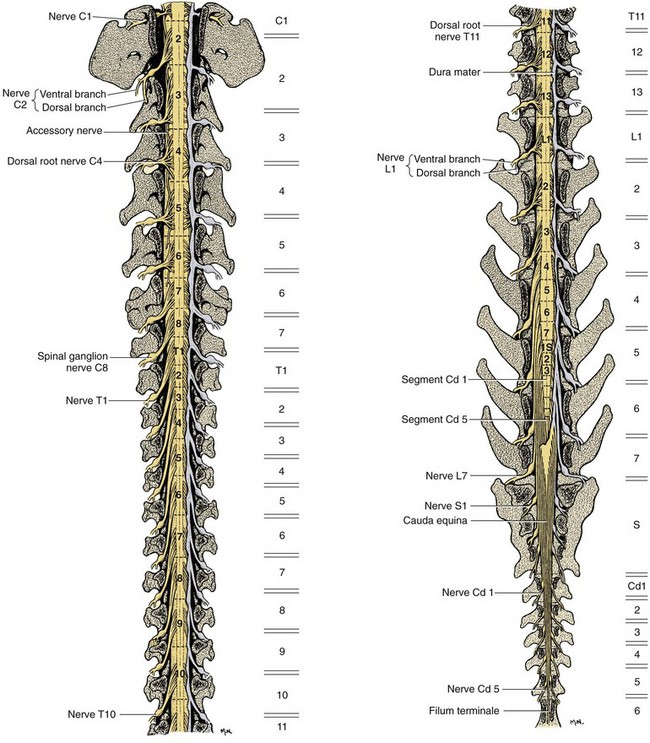

The lumbar disc is a fibrocartilaginous structure seated between two vertebral body endplates. The pars interarticularis is the location of the lamina between the superior and inferior articular processes and is prone to the development of stress fractures (spondylolysis) in the growing spine.

These joints lie in the sagittal plane and participate in flexion and extension of the lumbar spine. This joint occurs between the superior articular process of a vertebra and the inferior articular process of the vertebra immediately cephalad. The superior and inferior articular processes create the zygapophyseal joints (the facet joints). The transverse processes extend laterally, serving as attachment points for ligaments and musculature. At the junction between the pedicles and laminae, four articular processes and two transverse processes reside. From the junction of the two laminae, the spinous process extends posteriorly. The pedicles resist motion and transmit forces from the posterior elements to the vertebral body. Immediately dorsal to the vertebral body lie two pedicles that attach to the laminae. These include the vertebral body, and the dorsal structures termed the posterior elements. Įach lumbar vertebra consists of multiple components. This curvature is variable in degree and transfers the upper body mass over the pelvis to allow for efficient bipedal motion. From a lateral view, the lumbar spine has a concave curvature, referred to as the lumbar lordosis. The lumbar spine allows for diverse types of truncal motion, including flexion, extension, rotation, and side bending. This arrangement allows for the communication of information from the central nervous system to the lower extremities and vice versa.

The lumbar vertebrae form a canal that serves to protect the spinal cord and spinal nerves. The lumbar vertebrae (L1-L5) are much larger compared to other regions of the vertebral column, allowing them to absorb axial forces delivered from the head, neck, and trunk. First, the lumbar spine assists in supporting the upper body. There are three main functions of the lumbar spine. Each of these components plays an integral role in the form and function of the lumbar spine. The cauda equina, Latin for horse’s tail, is a bundle of spinal nerve roots that begin at the termination of the spinal cord and descend through the remainder of the canal. The lumbar spine is comprised of bone, cartilage, ligaments, nerves, and muscle. The spinal cord runs through the center of the vertebral column and terminates in the conus medullaris at the level of the L1-L2 vertebrae. The spinal cord in this region has protection from five durable and mobile vertebrae (L1-L5) that allow for the dispersion of axial forces. The lumbar spine comprises the lower end of the spinal column between the last thoracic vertebra (T12) and the first sacral vertebra (S1).


 0 kommentar(er)
0 kommentar(er)
